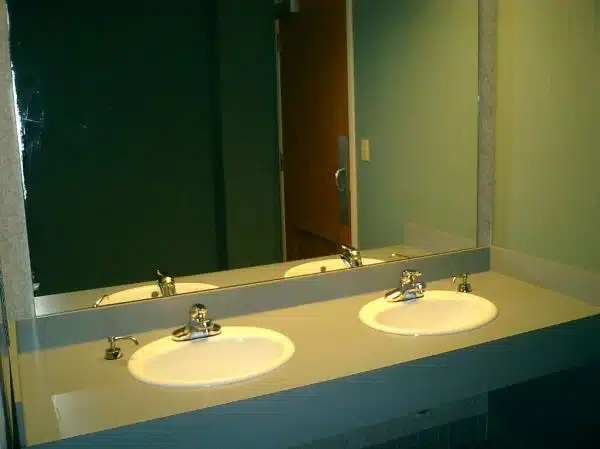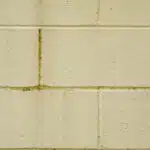As a professional painter or painting contractor, there is nothing more fulfilling than leaving a client’s home with a job well done. When it comes to painting a bathroom, however, the process can be more complicated than one might expect. A bathroom’s high humidity and constant exposure to moisture can make it challenging to achieve long-lasting results. In this article, we will explore the proper techniques for painting a bathroom and ensuring that your work not only looks great but also protects against future damage.
Painting a bathroom requires attention to detail and careful preparation. Before any paint is applied, it is important to thoroughly clean the walls and remove any existing peeling paint or wallpaper. Additionally, selecting the right type of primer and paint is essential for achieving good adhesion and resistance to moisture. By following these steps and taking extra precautions when working in a humid environment, you can ensure that your bathroom painting project will result in beautiful, long-lasting results that both you and your clients will appreciate.
Preparing The Bathroom For Painting
Choosing colors and preparing the surface are critical steps in painting a bathroom. Before starting, select the paint color that best suits your preferences and complements the existing decor. It is also important to choose a paint type that can withstand moisture, as bathrooms experience high humidity levels. An eggshell or satin finish is ideal for walls, while a gloss finish is recommended for trim and cabinets.
Surface preparation is crucial to ensure adhesion of the paint. Start by removing any loose or peeling paint using sandpaper or a scraper. Clean the walls thoroughly with soap and water and allow them to dry completely before proceeding with any other steps. Fill any holes or cracks with spackle, and sand down any rough spots until they are smooth. Additionally, use painter’s tape to protect areas that you do not want to paint, such as baseboards or windowsills.
In summary, selecting the right color and properly preparing the surface are essential steps in painting a bathroom. To achieve a professional-looking finish, it is crucial to take your time during this process and not rush through it. With these steps completed, you will be ready to move onto gathering necessary tools and materials for painting your bathroom.
Necessary Tools And Materials
To start painting a bathroom, you need to have the necessary tools and materials. These include a paint roller, paintbrushes, painter’s tape, sandpaper, drop cloths or plastic sheeting to protect the floors and fixtures from paint splatters. Other essential items that should be on your list are a paint tray, stir sticks, and a ladder or step stool.
When it comes to painting techniques for bathrooms, it is vital to clean the surfaces thoroughly before starting. You can use warm water mixed with mild soap to wash the walls and ceiling and then rinse them off with clean water. Sandpaper can be used to smooth rough spots or bumps on the surface. While choosing color choices for your bathroom, consider colors that are both soothing and inviting.
As a professional painter or contractor, I recommend that homeowners select high-quality paints designed specifically for bathrooms. Bathrooms endure high levels of moisture and humidity; therefore, it is crucial to choose paints that resist mold growth and mildew. The next section will discuss how to choose the right type of paint suitable for your bathroom walls.
Choosing The Right Type Of Paint
After gathering all the necessary tools and materials for painting a bathroom, it’s time to choose the right type of paint. Choosing colors is important, but equally essential is selecting the appropriate paint finish. Bathroom walls are exposed to moisture and humidity, so it’s crucial to choose a paint that can withstand these conditions.
When choosing colors for your bathroom, consider using light shades as they create an illusion of more space. Lighter colors also reflect more light, making the room appear brighter and more inviting. Neutral shades like beige, gray, and white are popular choices for bathrooms as they provide a clean and classic look.
In addition to selecting colors, choosing the right paint finish is just as important. For bathroom walls, a semi-gloss or satin finish is recommended as they are easy to clean and offer resistance against moisture and mildew growth. Avoid using flat finishes as they don’t hold up well in high-moisture environments such as bathrooms.
It’s important to note that before applying any paint on your bathroom walls, you need to test for moisture. This step involves taping a plastic sheet onto the wall and leaving it for 24 hours. If there’s condensation on the plastic after removing it, then there’s too much moisture in the wall. In this case, you’ll need to address any water leaks or issues before proceeding with painting.
Testing For Moisture
Moisture testing is a crucial step when preparing to paint a bathroom. Moisture can cause paint to peel or bubble, leading to an unsightly finished product. To test for moisture, use a moisture meter, which measures the amount of moisture present in the walls. If the moisture reading is above 12%, it is recommended to wait until the area dries out before painting.
In addition to moisture testing, proper ventilation is essential when painting a bathroom. Bathrooms are high-moisture areas and can become humid quickly. When humidity levels are high, it can take longer for paint to dry, which can lead to issues like mildew or mold growth. Use exhaust fans or open windows during and after painting to promote proper ventilation and help prevent these issues from occurring.
Ensuring that your bathroom has proper ventilation and low levels of moisture will help ensure that your painted surfaces last longer and maintain their appearance over time. The next step in preparing your bathroom for painting is removing existing wallpaper or paint.
Removing Existing Wallpaper Or Paint
Removing existing wallpaper or paint is an essential step in preparing your bathroom walls for painting. This process requires careful attention to detail, as it can significantly impact the quality and longevity of your paint job. There are two primary techniques for removing wallpaper or paint: scraping and wall prep.
Scraping Techniques involve using a scraper tool to remove large sections of wallpaper or paint. Start by wetting the surface with warm water and apply a stripping solution if necessary. Then, use a scraper tool to gently peel off the paper or paint layer, being careful not to damage the underlying drywall. For stubborn areas, use sandpaper or a wire brush to smooth out rough patches.
Wall Prep Techniques involve applying a primer coat over existing wallpaper or paint to create a smooth surface for new paint application. Begin by cleaning the walls thoroughly with soap and water, then sand any rough patches until the surface is even. Apply primer using a roller or brush and allow it to dry completely before proceeding with painting.
To ensure that your bathroom walls are ready for painting, follow these key steps:
- Test for lead-based paint before starting.
- Remove any loose wallpaper or peeling paint before scraping.
- Use protective gear such as gloves and goggles when handling chemicals.
- Sand down any rough patches after scraping.
- Apply primer evenly across all surfaces before painting.
With these techniques in mind, you can effectively prepare your bathroom walls for painting. The next step involves patching holes and sanding walls to ensure that they are completely smooth before applying new coats of paints.
Patching Holes And Sanding Walls
A painter is like a surgeon, where every stroke of the brush is critical to the final outcome. Similarly, patching holes and sanding walls are crucial steps in painting a bathroom that require precision and expertise. Spackling techniques involve filling holes or cracks with spackle paste to create a smooth surface for painting. A professional painter understands the importance of applying several thin layers of spackle paste and allowing each layer to dry before sanding it down with a sandpaper grit.
When it comes to sandpaper grits, there is no one-size-fits-all solution. Sandpapers come in different grits, ranging from coarse to fine, where each type serves its own purpose. A professional painter knows which grit to use for different surfaces and levels of roughness. For instance, using coarse-grit sandpaper on a smooth wall will leave scratches that will show through paint. On the other hand, using fine-grit sandpaper on a rough surface will not provide enough abrasiveness to reach all areas.
To achieve perfection in patching holes and sanding walls, it’s essential to pay attention to detail. A professional painter takes time to inspect every inch of the wall and ensure it’s free from any imperfections before moving on to the next step of applying primer. By following proper spackling techniques and using appropriate sandpaper grits, one can achieve an even surface that provides the perfect base for painting.
Applying Primer
After patching holes and sanding walls, the next step in painting a bathroom is applying primer. Primer serves as a preparatory coat that helps paint adhere better to surfaces. It also covers stains and discolorations, evens out texture, and improves durability. Using primer can save time and money on paint by reducing the need for multiple coats.
There are different types of primer for various surfaces such as drywall, plaster, wood, metal, and masonry. Choose a primer that is compatible with the surface material and type of paint you plan to use. For instance, oil-based primers work well on bare wood and metal but may not be suitable for latex paints. Water-based primers are versatile and easy to clean up but may not penetrate deep enough into porous surfaces.
The importance of primer coverage cannot be overstated. A thin or uneven layer of primer can lead to poor adhesion, inconsistent color, or flaking over time. Apply enough primer to achieve uniform coverage without leaving gaps or drips. Use a brush or roller depending on the surface area and texture. Allow sufficient drying time before sanding lightly with fine-grit sandpaper to smooth out any imperfections before painting the ceiling.
Painting The Ceiling
To ensure that the painting of the ceiling is successful, it is important to properly prepare the surface by cleaning, filling any holes or cracks, and sanding to ensure a smooth finish.
The appropriate tools for painting the ceiling should be selected, including brushes, rollers, and brushes for cutting in.
It is important to use a primer to ensure that the paint has a good bond to the surface and that the finish will be even.
The paint should be chosen carefully, paying attention to the finish, sheen, and color, and it should be applied in multiple thin coats to ensure an even and professional-looking finish.
Preparing The Ceiling
When it comes to painting a bathroom, it’s essential to pay attention to the ceiling. After all, this is one of the most prominent features in any room and can make or break the overall look and feel of the space. As a professional painter, I recommend that you take the time to properly prepare your ceiling before starting your project.
One of the first things you’ll need to consider is the ceiling paint color. While white is a popular choice for bathrooms due to its clean and fresh look, there are plenty of other options available. Consider using a light blue or green shade for a calming effect or a bold accent color if you want to make a statement. Once you’ve chosen your paint color, it’s time to start preparing your ceiling.
Ceiling preparation tips include cleaning the surface thoroughly with soap and water and removing any flaking or peeling paint. It’s also important to fill in any cracks or holes with spackle and sand down any rough spots. Finally, use painter’s tape around the edges of your ceiling to protect walls from accidental splatters. By following these simple steps, you’ll be well on your way to achieving a flawless finish on your bathroom ceiling without any unsightly imperfections.
Painting With The Correct Tools
When it comes to painting the ceiling, it’s essential to have the correct tools for the job. By using the right equipment, you can ensure that your paint goes on smoothly and evenly, resulting in a flawless finish. Painting techniques such as cutting in and rolling require specific tools that can make all the difference in achieving professional-looking results.
Before starting your project, it’s important to select the right paintbrushes and rollers for your ceiling. A high-quality brush with natural bristles will provide better coverage than a cheaper synthetic brush. When selecting rollers, choose a nap thickness appropriate for your paint type and surface texture. Additionally, consider investing in an extension pole for hard-to-reach areas.
Color selection is also crucial when painting a ceiling. While white is a popular choice due to its clean and bright appearance, other colors can add dimension and interest to your space. Consider using a shade slightly lighter or darker than your wall color for a subtle contrast or choosing a bold accent color for a statement look. With proper preparation and the correct tools, painting a bathroom ceiling can be an easy and rewarding DIY project that adds value to any home renovation project.
Painting The Walls
Did you know that bathrooms are the most commonly painted rooms in a household? According to a recent survey, over 70% of homeowners choose to paint their bathrooms every five years. This is because bathrooms are high-moisture areas that can easily succumb to mold and mildew growth. Painting the walls in your bathroom not only enhances its aesthetic appeal but also protects it from moisture damage.
When it comes to color selection for your bathroom walls, there are endless possibilities. However, it’s important to choose colors that complement your bathroom fixtures and accessories while creating a relaxing ambiance. Neutral shades like beige, off-white, and light grey are popular choices as they make small spaces appear larger. If you prefer bold colors, accent walls can be a great way to add personality without overwhelming the space.
Before painting the walls, take the necessary steps to prep them properly. Clean the walls thoroughly with soap and water to remove any dirt or grime. Then, use a primer to create an even base for your paint. Once the primer has dried completely, apply two coats of paint in thin layers using a roller or brush. Remember to let each coat dry completely before applying the next one.
As you finish up painting your bathroom walls, don’t forget about the trim! The trim around windows, doors, and baseboards adds depth and dimension to your bathroom’s overall look. Whether you choose a contrasting color or stick with white for classic elegance, painting the trim is an important finishing touch that completes your bathroom makeover.
Painting The Trim
When painting a bathroom, the trim is an essential part of the process that should not be overlooked. Choosing colors for the trim can be a daunting task, but it is important to consider the overall color scheme of the bathroom. The trim should complement the wall color and tie in with any other design elements in the room.
Once you have chosen your colors, it’s time to focus on trimming techniques. One crucial tip is to use painter’s tape to ensure clean lines and prevent paint bleed. It’s also important to use a high-quality brush or roller for smooth application. Proper preparation, such as sanding and cleaning the surface beforehand, is key to achieving a professional-looking trim.
Incorporating unique details into your trim can add personality and interest to your bathroom. Consider using different finishes, such as gloss or satin, or incorporating decorative molding for an extra touch of elegance. With careful attention to detail and technique, painting your bathroom’s trim can give your space a polished look that will last for years to come.
Transitioning into the subsequent section about painting cabinets and vanity: Now that you have mastered painting your bathroom’s trim, it’s time to move onto another important element in the room – the cabinets and vanity.
Painting Cabinets And Vanity
Symbolism is a powerful technique that can be used to create interest and engagement in writing. When it comes to painting cabinets and vanity, the process involves much more than just adding a new coat of paint. Just as a butterfly undergoes metamorphosis, the cabinets and vanity undergo a transformation that is both beautiful and functional.
Color options play an important role in the overall look and feel of the bathroom. Choosing the right color can make all the difference in creating a cohesive and stylish space. DIY techniques are often used by homeowners to save money on home improvement projects. However, when it comes to painting cabinets and vanity, it’s important to remember that hiring a professional painter or painting contractor can ensure high-quality results.
To achieve a flawless finish, preparation is key. This includes removing all hardware, sanding down any rough spots, and cleaning surfaces thoroughly before applying primer and paint. A professional painter or contractor will have the necessary tools and expertise to ensure that every step of the process is done correctly. Remember that painting cabinets and vanity requires precision work – it’s not something you want to rush through.
When it comes to sealing grout lines, attention to detail is essential for ensuring long-lasting results. By properly sealing grout lines, you can protect your bathroom from water damage and mold growth. In the next section, we’ll discuss how to seal grout lines effectively without compromising on quality or durability.
Sealing Grout Lines
After painting the cabinets and vanity in your bathroom, the next step is to seal the grout lines. Grout sealing is a necessary process that helps protect the grout from moisture and stains. When left unsealed, grout can easily absorb water, dirt, and other substances that can cause discoloration or damage.
Before applying any sealer to the grout lines, it’s important to ensure that the surfaces are clean and dry. Use a grout cleaning solution and a stiff-bristled brush to scrub away any dirt or debris. Allow enough time for the surface to dry completely before proceeding with the sealing process.
When it comes to selecting the best grout sealer for your bathroom, there are several options available in the market. Some of these include penetrating sealers, membrane-forming sealers, and epoxy sealers. Consult with a professional painter or painting contractor to determine which type of sealer is best suited for your specific needs. Applying multiple coats of sealer may be necessary for optimal protection. With proper grout sealing techniques and high-quality sealers like those found in our recommendations for best grout sealers list below you’ll be able to prevent moisture damage while keeping your bathroom looking its best.
Transition: Once you have completed sealing your bathroom’s grout lines, it’s important to clean up properly after painting. Keep reading on how you can accomplish this task efficiently without damaging any surfaces in your bathroom.
Cleaning Up After Painting
- Preparation for painting a bathroom is essential for a successful outcome; this includes covering furniture, fixtures and floors with plastic drop cloths.
- Walls should first be wiped down with a damp cloth and then a mild detergent and water solution to remove any dirt or grime before painting.
- Once the paint is dry, the walls can be wiped down with a damp cloth and a solution of vinegar and water to remove any residue.
- To remove paint from the walls, use a putty knife to scrape the paint off; then wipe the wall clean with a damp cloth and detergent solution.
- Floors should be vacuumed and wiped clean of dust and debris prior to painting.
- Any paint that drips onto the floor and has dried can be easily removed with a solvent such as mineral spirits.
Preparing The Room
When it comes to painting a bathroom, preparing the room should be given utmost importance. Color selection plays an important role in setting the mood of the bathroom. Opt for colors that are light and airy to make the room feel spacious or dark shades to give a cozy vibe. However, before you start painting, remove all fixtures and furniture from the bathroom to avoid splatters of paint on them.
Safety precautions must be taken when preparing the room for painting. Make sure there is enough ventilation by opening windows or using a fan to circulate air while painting. Wear protective gear such as gloves, goggles, and masks to avoid inhaling paint fumes or getting paint on your skin. Don’t forget to cover floors with drop cloths or plastic sheets to protect them from drips and spills.
In conclusion, before starting any painting project in the bathroom, it is crucial to prepare the room properly. Careful color selection can transform the look and feel of your bathroom while taking safety precautions ensures a smooth and hassle-free experience. By following these simple steps, you can achieve professional-looking results that will leave you feeling proud of your work.
Cleaning Paint From Walls
After successfully painting a bathroom, cleaning up is the next essential step. Removing stains and cleaning paint from walls can be a daunting task, especially if you don’t know how to do it correctly. However, with the right tools and techniques, you can make this process more manageable and get your bathroom looking spotless in no time.
When it comes to removing stains from painted walls, choosing the right cleaning products is crucial. Avoid using harsh chemicals that can damage the paint or leave behind residue. Instead, opt for mild cleaners such as dish soap or vinegar mixed with warm water. Apply the solution to a clean rag or sponge and gently scrub the stained area until it disappears. Rinse thoroughly with clean water and dry with a soft towel or cloth.
Cleaning paint off walls requires patience and attention to detail. Start by wiping down the walls with a damp cloth to remove any dirt or dust buildup before tackling paint spills or splatters. If there are only minor spots of paint on the wall, use a razor blade or scraper to scrape them off gently. For larger areas of paint spillage, use sandpaper to remove as much excess paint as possible before using a cleaner. With these tips in mind, you can easily clean your bathroom walls without damaging the paint finish, leaving your bathroom looking brand new again!
Removing Paint From Floors
After successfully painting a room, it’s crucial to clean up any paint spills or splatters on the floor. Taking care of these stains promptly will help prevent long-term damage to your flooring and ensure that your newly painted room looks professional and polished.
When it comes to protecting floors during painting, prevention is key. Before you start, make sure you have adequate floor protection in place. Cover all surfaces with drop cloths, plastic sheeting or painter’s tape to prevent paint from getting on the floor. If you do get paint on the floor, don’t panic! There are several effective paint stripping techniques that can help remove even the most stubborn stains.
One of the easiest ways to remove paint from floors is to use a scraper or putty knife to gently scrape away as much excess paint as possible. Once you’ve removed all visible traces of paint, apply a commercial paint stripper solution according to the manufacturer’s instructions. Be sure to work in a well-ventilated area and wear gloves and protective eyewear while handling chemicals. After allowing the stripper to sit for the recommended amount of time, use a scraper or stiff-bristled brush to remove any remaining residue. Finally, rinse the area thoroughly with water and dry with a clean towel or cloth. By following these steps, you can effectively remove paint from your floors without causing damage or leaving behind unsightly stains.
Drying Time And Curing
Drying Time and Curing:
Ah, the sweet smell of freshly painted walls. After all the hard work of prepping and painting your bathroom, it’s time to sit back and admire your handiwork. But not so fast! Before you can truly enjoy your newly painted space, it’s important to understand the importance of proper drying time and curing.
Firstly, it’s crucial to ensure that there is adequate ventilation in your bathroom during the drying process. This will help prevent any potential issues with peeling or bubbling. Open windows or turn on a fan to promote air circulation. Additionally, avoid using the shower or bath for at least 24 hours after painting to allow ample time for the paint to dry.
To further avoid peeling issues, here are some tips:
- Avoid applying too thick of a coat
- Don’t rush the drying process
- Use high-quality paint
- Prime before painting
- Opt for a satin or semi-gloss finish
Remember, patience is key when it comes to allowing paint to fully cure. While it may seem like your bathroom is ready for regular use after a few days, it can actually take up to 30 days for paint to fully cure. During this time, be gentle with any painted surfaces and avoid using harsh cleaning products.
Next up: maintaining painted surfaces in the bathroom…
Maintaining Painted Surfaces In The Bathroom
After allowing the paint to dry and cure, it is important to maintain the painted surfaces in your bathroom. Preventing peeling and avoiding stains is crucial in keeping the bathroom looking fresh and clean. Here are some tips on how to maintain your newly painted bathroom.
Firstly, avoid using harsh chemical cleaners on the painted surfaces as they can cause damage or discoloration over time. Instead, use a mild cleaner or warm water with a non-abrasive sponge or cloth to wipe down surfaces. It is also important to regularly clean any areas that are prone to moisture buildup, such as around the shower or sink, to prevent mold growth.
Secondly, be careful when hanging items on the walls such as towel bars or shelves. Use proper hardware and avoid drilling holes too close together as this can weaken the paint and cause peeling or cracking. If you need to remove an item from the wall, do so carefully by gently prying it off with a putty knife instead of pulling it off forcefully.
Lastly, consider adding a moisture-resistant coating over the paint for added protection against humidity and moisture buildup in the bathroom. This will help prevent peeling and extend the life of your painted surfaces. Overall, taking these steps will ensure that your newly painted bathroom stays looking its best for years to come.
Conclusion
Painting a bathroom may seem like an easy task, but it requires proper preparation and execution to achieve the desired outcome. As a professional painter or painting contractor, it is essential to follow the necessary steps to ensure that the paint job lasts for a long time and withstands the moisture and humidity in the bathroom.
From preparing the surfaces to selecting the right type of paint, every step in the process plays a crucial role in achieving a flawless finish. Choosing high-quality materials and tools is equally important to ensure that the paint adheres properly and does not peel or chip easily.
Additionally, sealing grout lines, testing for moisture, and allowing sufficient drying time are all essential aspects of painting a bathroom. Neglecting any of these steps can result in an unsatisfactory outcome that may require repainting sooner than expected.
In conclusion, painting a bathroom may seem like a simple task, but it requires careful planning and execution. As professionals in our field, we must take every step seriously to ensure that our customers receive top-notch results that they can enjoy for years to come. By following these guidelines and applying our expertise as painters or contractors, we can provide excellent service while maintaining our reputation as reliable professionals in our industry.
Image Credits
- “bathroom” by dhlynsky (featured)





























